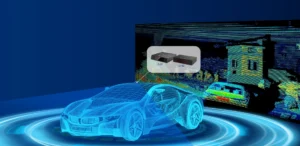Tasks that involve estimation of object velocity and distance demand the use of radar technology. So, how does a radar system achieve this? It’s designed with transmitters for emitting radio wave signals. Most important are the signals that come back to the receiver. The change in their frequency is crucial in determining an object’s distance and velocity.
Radar technologies operate on the same concept. However, they have diverse functions in different sectors. So, what are the different types of radar systems?
- Doppler radar
Doppler radar utilizes the Doppler effect to figure out object distance. Ever been stunned by the gun-like device traffic officers use? How does it work? How can it determine your velocity? Well, the name of the device is a radar speed gun. And that is the Doppler effect into play. Therefore, the Doppler effect is the variation in signal frequency returned to the radar about a shift in the observer and object distance. That’s it.
A decrease in distance between the two lowers wave frequency. The opposite is true. Wave frequency decreases when they move farther apart. Therefore, the shift in signal frequency is what is the Doppler effect. And this variation is what produces precise object distance and velocity measurements.
Doppler radar applications are not limited to radar speed guns, weather stations, the medical sector, et cetera.
- Bistatic radar
As mentioned above, a typical radar has two primary components: transmitter and receiver. The transmitter emits the signal. The receiver receives the reflected signal. However, the two can be located either at the same place or in separate places. A bistatic radar has two components located in different locations. Is there a radar system where the two components are in the same location? Yes. It’s called a monastic radar.
- Continuous-wave radar
This type of radar takes advantage of the Doppler effect, too. But its transmitter consistently emits a stable wave frequency. The receiver captures this wave signal once it bounces off of target objects. Because this radar uses the Doppler effect, the signal transmission is not limited by object occlusion in its path.
- Weather radar
A weather radar is used in meteorology and aviation. It’s usually installed in aircraft. So, how is it useful to pilots? Weather radar has special sensors for primarily detecting the type of precipitation. Besides, a pilot can tell the direction and velocity of precipitation from the display screen. Weather radar also utilizes the Doppler effect. And the signal sent out to capture precipitation data is radio wave signals.
- Passive radar
Passive radar is mostly used in the commercial broadcast sector. It works just like the bistatic radar. Although in passive radar, the wave signal transmitted is aimed at non-cooperative objects incapable of reflection. The approach used in processing reflections from these surfaces is quite complicated.
- Instrumentation radar
Private agencies and governments mostly use this type of radar. It’s crucial in the testing of aircraft and rockets. It provides valuable space and time information during and after the analysis.
- Mapping radar
Mapping radar is commonly used in surveying. It’s used to obtain surface data for development planning. But the data collected is limited to stationary objects. It’s used to gather data over a large geographical area.
- Navigational radar
Lastly, this radar system is installed on ships for use by captains to ensure safe navigation. They are essential for detecting and avoiding any features that could potentially pose a threat.
The bottom line
In conclusion, a radar system is primarily used to determine the velocity and distance of target objects. It has transmitters for sending radio wave signals. The receivers receive reflected signals. Analysis of returned signal frequency variation produces precise object data desired.
The categorization of radar systems is primarily based on their functionalities in different fields. Radar system types include Doppler radar, bistatic radar, maritime radar, weather radar, passive radar, et cetera.






Pingback: Active Radar vs Passive Radar - LIDAR and RADAR